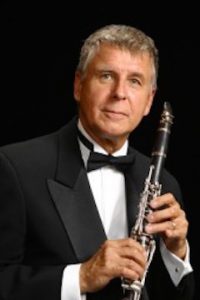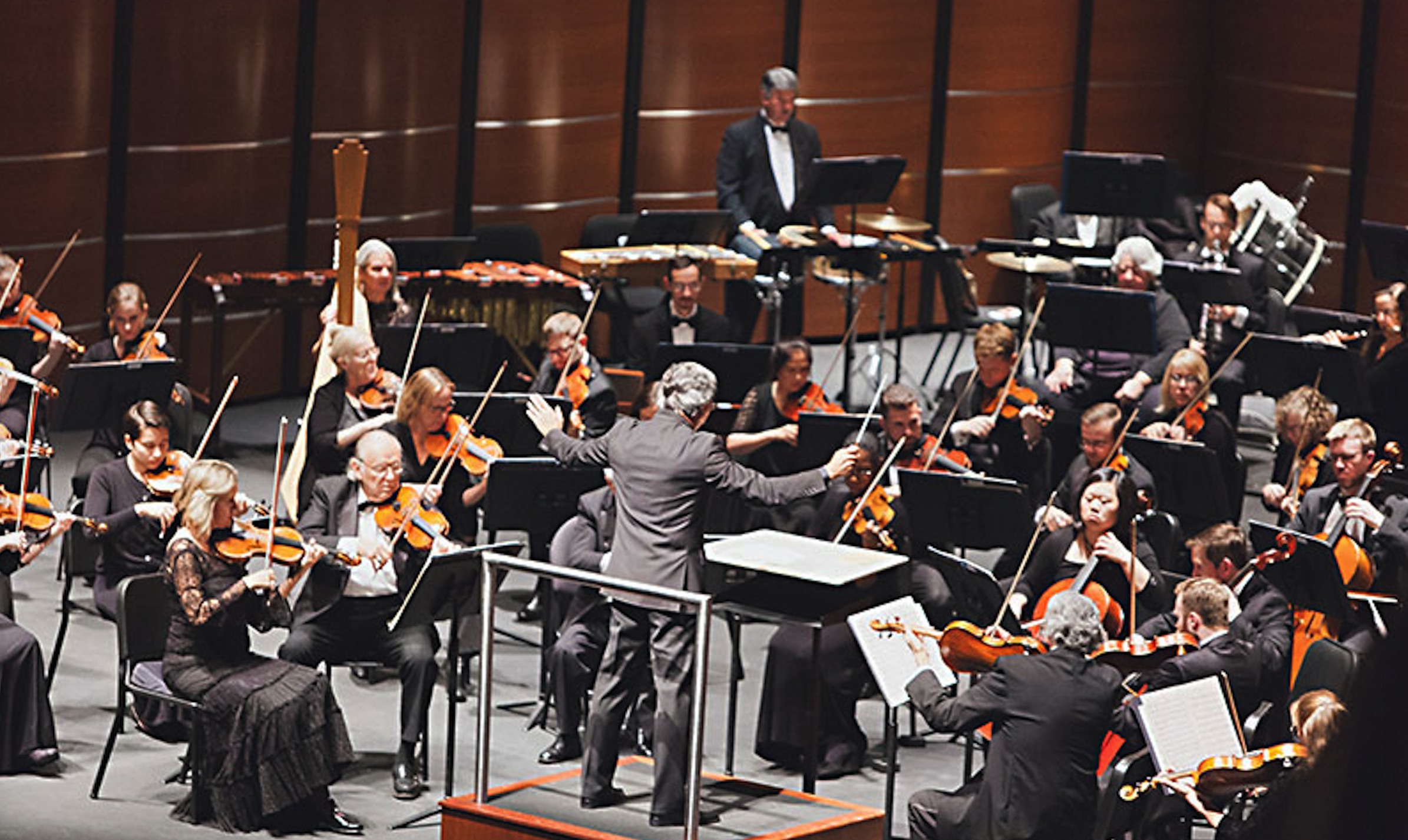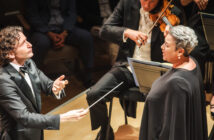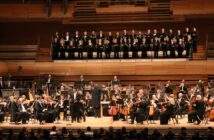Beyond the Score: Prokofiev Symphony No. 5 – Pure Propaganda? (A multimedia exploration)
Prokofiev: Symphony No. 5 in B flat major Op. 100 (complete performance)
Austin Symphony Orchestra/Peter Bay
Long Center for the Performing Arts, Austin, TX, December 2, 2017
British composer, arranger, broadcaster, teacher and writer Gerard McBurney has developed quite a reputation for his music appreciation series “Beyond the Score,” which takes a single major work by a composer and provides a context for it drawing on letters, contemporaneous political events, excerpts from the work itself as well as from other works by the same composer.

Gerard McBurney
This “Beyond the Score” concept, created by McBurney for the Chicago Symphony Orchestra (CSO) which gave these productions a first airing, makes use of an orchestra, actors and a big screen for slides and film. Other orchestras around the country are invited to rent the scripts, slideshows and films for their own audiences. CSO “Beyond the Score” programs ran over an eleven-year period, with the final instalment presented in the orchestra’s 2015-16 season.
“Beyond the Score” programs have undoubtedly given thousands of concertgoers a stimulating introduction to many great musical masterpieces, from Beethoven’s Symphony No. 5 through Debussy’s La Mer and Mahler’s Symphony No. 4, up to and including Stravinsky’s Rite of Spring and Shostakovich’s Symphony No. 4. No doubt, many Austin concertgoers got a great deal out of the “Beyond the Score” edition of Prokofiev’s Symphony No. 5 presented last week. Unfortunately, McBurney’s multimedia creation left me, a listener who has known and loved this great piece for more than half a century, confused and disoriented.
To elaborate, we were given some historical context, mainly about the years before the Symphony No. 5 was composed, when Prokofiev returned to his native Russia after years of traveling and working in the United States and France. By that time, Russia was firmly in the grip of Stalin and was soon facing a long and vicious war with invasion forces from Nazi Germany.

Sergei Prokofiev (circa 1918)
McBurney seems to suggest that Prokofiev was able to stomach Stalin’s oppression of the Russian people because of his belief in Christian Science. Somehow the Marxist vision of a Utopian society meshed with Prokofiev’s religious beliefs. But in McBurney’s script, these connections were made in passing and never fully developed; instead, we got wartime film footage accompanied by passages from the Fifth Symphony. I was left with the distinct impression that not only was Prokofiev’s symphony inspired by the war with Germany, but that it was actually a depiction of that war.
This is surely one of the dangers of going “beyond the score” to relate historical events to musical events in a piece of music. In fact, Prokofiev’s Symphony No. 5 is not “programmatic” in the manner of tone poems by Liszt or Richard Strauss, which follow story lines. Prokofiev’s Symphony No. 5 is pure music and to understand it, the most important element to study is the score itself.
McBurney’s efforts are certainly laudable and often brilliant, but in the case of Prokofiev’s Fifth Symphony, I wonder whether he might have spent more time demonstrating the purely musical connections – playing the main themes and showing how they are developed, or explaining to the audience the composer’s mastery of orchestration – rather than giving us a mishmash of readings and film excerpts. McBurney surely didn’t intend his audience to believe that Prokofiev was writing “movie” music, yet that is the impression I got.

Clarinettist Stephen Girko
After intermission, Peter Bay and the Austin Symphony gave us a complete performance of the symphony, without actors and without film of soldiers rushing about or guns going off. And what a performance it was! The orchestra played superbly, with each section making the most of its chance to shine. The strings distinguished themselves repeatedly, with the cellos deserving special mention for their beautifully expressive playing at the beginning of the last movement. And a few bars later came some stellar clarinet playing from Stephen Girko in the playful main theme of the movement.
As usual, conductor Peter Bay had attended to every detail in rehearsal and found exactly the right tempo for each movement. He not only gave us a precise reading of the score, but also did justice to the emotions that inspired it. The slow movement was profoundly moving and the climaxes were thrilling, with brass and percussion in full cry.















